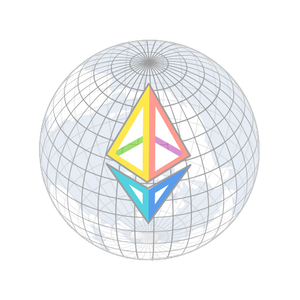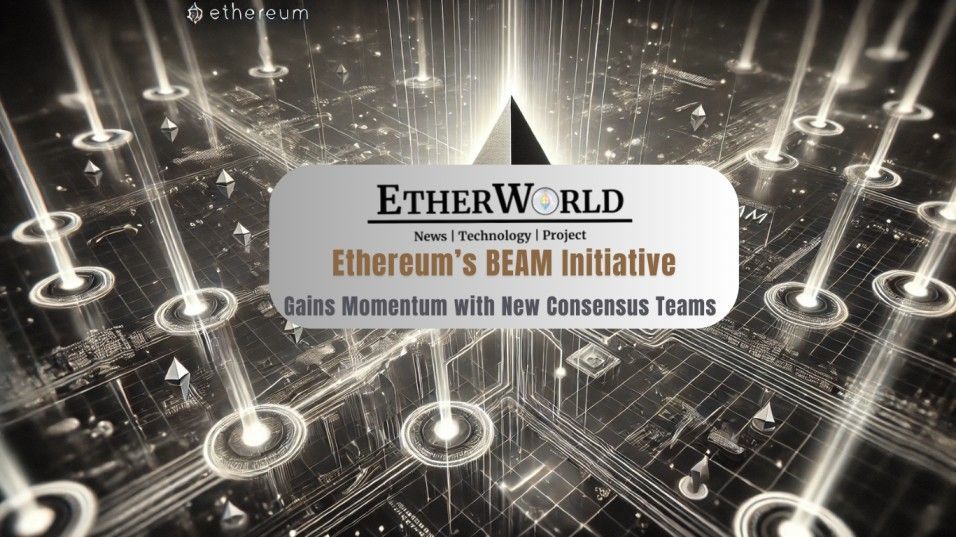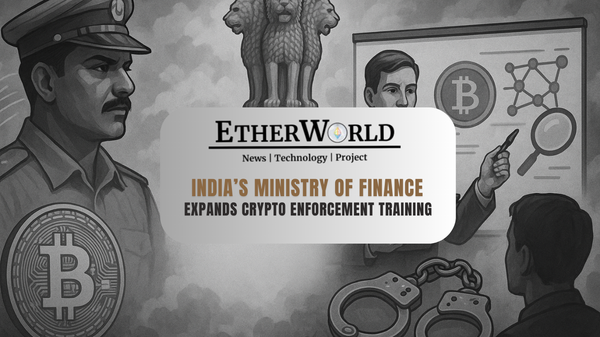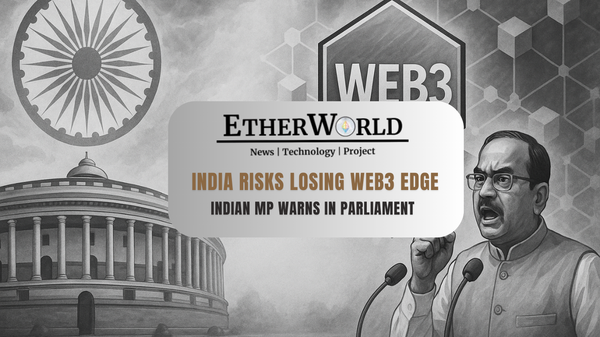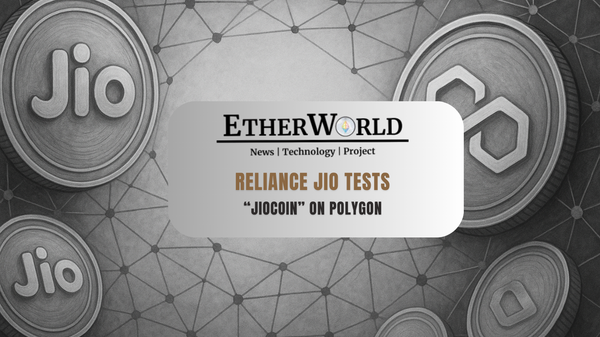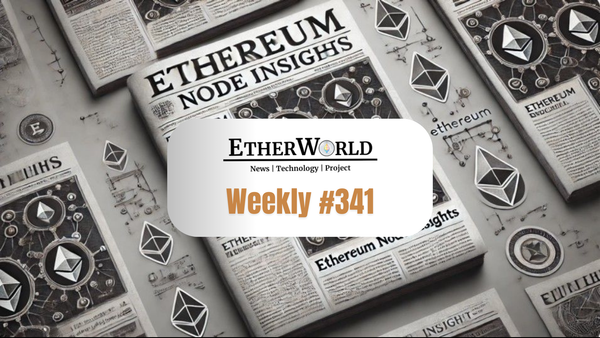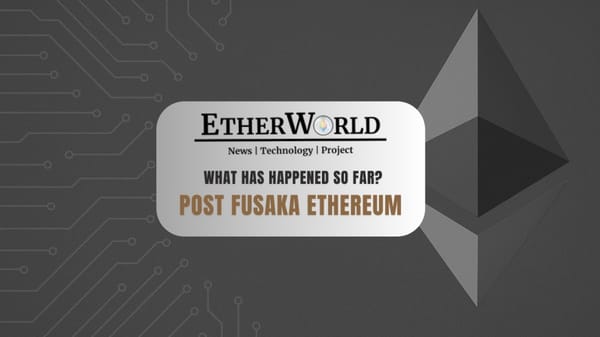Ethereum is making another bold move towards scalability, decentralization, and efficiency with its BEAM initiative. The initiative, first introduced at DevCon, aims to reimagine the consensus layer using Zero-Knowledge (ZK) while fostering a global, community-driven development approach.
With the announcement of eight new development teams and three existing teams joining the effort, the BEAM initiative is rapidly gaining traction, signaling a significant shift in Ethereum’s future.
What is BEAM?
The BEAM initiative is Ethereum’s latest research and development effort aimed at optimizing the consensus layer. Unlike previous blockchain enhancements that focused on execution layers or rollups, BEAM directly targets Ethereum’s core consensus to make it faster, more secure, and highly decentralized.
- Zero-Knowledge Friendly Consensus: - Utilizing ZK technology for efficient validation and enhanced security.
- Improved Decentralization: - Enabling a wider range of participants to contribute to Ethereum’s validation process.
- Better Scalability: - Reducing computational costs for full verification on constrained devices.
- Enhanced Client Diversity: - Encouraging multiple development teams to build independent clients for redundancy and security.
New Consensus Teams Leading BEAM’s Development
A diverse set of eight new consensus layer teams has joined the BEAM initiative, bringing a wide range of expertise, development approaches, and programming languages to the table. These teams are tasked with building new clients that adhere to BEAM’s innovative consensus framework. Here’s a look at the key players:
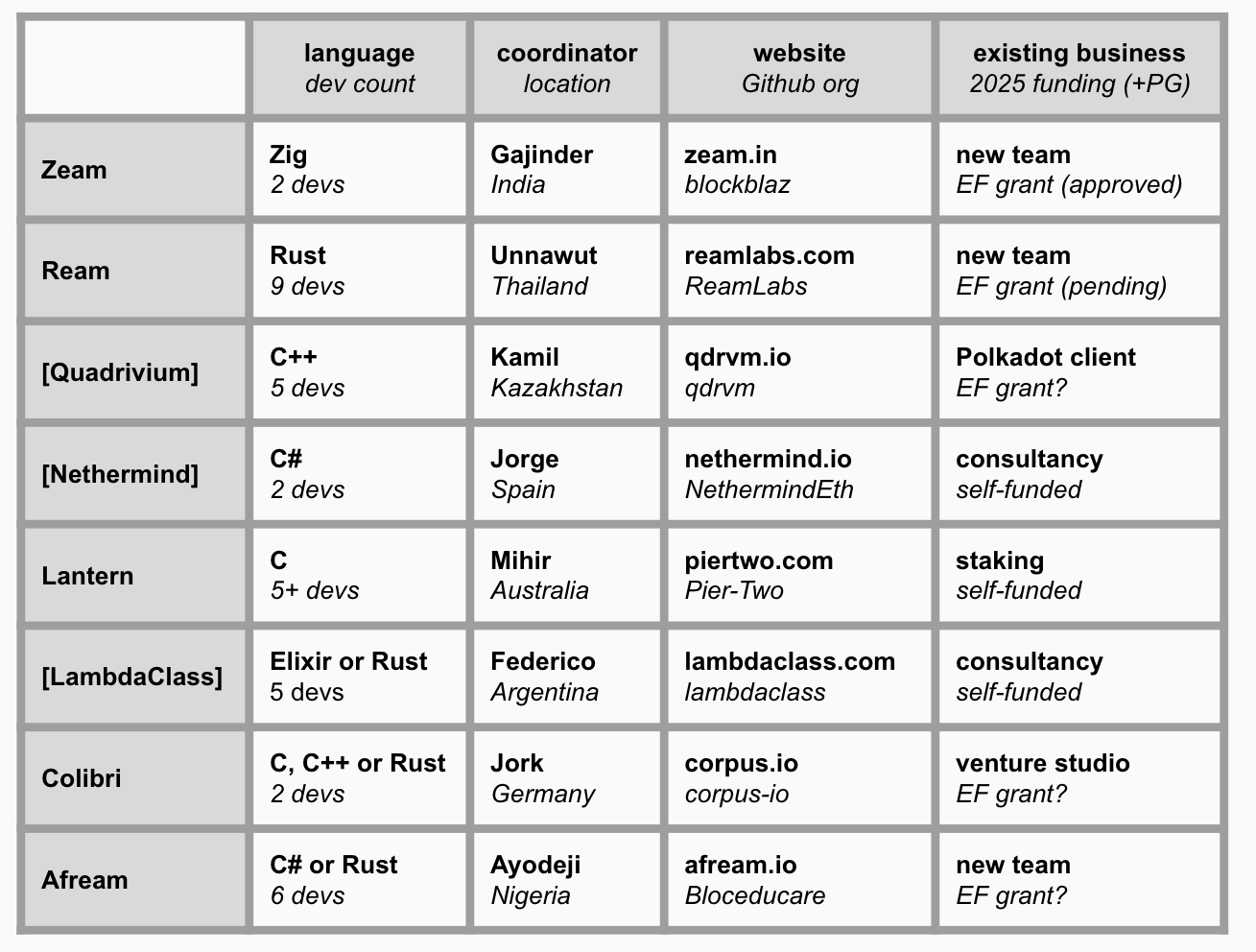
- Zeam (Zig-based BEAM Client): Zeam is the first Ethereum client to be built using Zig. It is focused on creating a lightweight, performance-optimized consensus client that enhances network efficiency. This initiative has received support from an Ethereum Foundation grant, which is helping accelerate its development.
- Ream Labs (Rust-Based BEAM Client): Ream Labs is developing a Rust-based consensus client that aligns with BEAM’s specifications. The team is conducting extensive Zero-Knowledge State Transition experiments to refine Ethereum’s scalability solutions. Additionally, they are benchmarking different ZK Virtual Machines (ZKVMs) to optimize transaction verification.
- Quadrivium (C++ Implementation): Quadrivium is leveraging its extensive experience with C++ and the Polkadot Relay Chain to build a BEAM-compatible client. The team previously developed libP2P for Polkadot and is now working on integrating it with Ethereum’s networking stack to improve efficiency and decentralization.
- Nethermind (C# & .NET Implementation): Nethermind is extending its expertise in Ethereum’s execution layer to the BEAM initiative. The team is developing a .NET-based libP2P implementation, which will provide enhanced connectivity and network robustness. Additionally, they are experimenting with Zero-Knowledge proving within the .NET ecosystem.
- Lantern (C-based IoT-Focused Client):) Lantern is exploring how IoT devices can seamlessly interact with Ethereum’s state verification mechanisms. To achieve this, the team is developing a lightweight BEAM client in C, ensuring that resource-constrained devices can efficiently participate in Ethereum’s consensus process.
- Lambda Class (Rust & Elixir Implementation): Lambda Class has prior experience in developing Rust-based Ethereum execution clients. As part of the BEAM initiative, they plan to build a Rust-based BEAM client and are also considering using their own programming language, Concrete, to enhance security and performance.
- Colibri (Lightweight Embedded Device Client): Colibri is focused on developing an ultra-lightweight BEAM client tailored for embedded devices. The team aims to ensure that even low-resource hardware can verify Ethereum’s state transitions, contributing to greater decentralization and accessibility.
- Afrim (Africa’s First Ethereum Consensus Team): Afrim is the first Ethereum consensus team based in Africa. The team is dedicated to training and onboarding local developers to contribute to Ethereum’s BEAM initiative. Their goal is to expand Ethereum’s presence and accessibility in emerging markets, fostering broader blockchain adoption.
In addition to these new teams, three existing Ethereum consensus teams—Prism, Lighthouse, and Lodestar—are actively engaging with BEAM, ensuring that Ethereum’s current infrastructure and development insights contribute to this next-generation consensus layer.
Challenges Ahead for BEAM
While BEAM’s vision is ambitious, it also faces key challenges. The BEAM name itself is currently involved in trademark disputes, which necessitates a rebranding effort. This legal hurdle could impact brand recognition and delay certain promotional efforts.
Another significant challenge is funding and coordination. Many teams involved in BEAM’s development are self-funded, which raises concerns about long-term sustainability. Ensuring continued financial support and aligning multiple independent teams will be crucial for the initiative’s success.
Technical feasibility is another major concern. Integrating Zero-Knowledge (ZK) proofs into Ethereum’s consensus layer is a highly complex task. It requires rigorous testing and optimizations to ensure seamless implementation without compromising security or network performance.
However, with the Ethereum Foundation’s support and a dedicated global team, these challenges are being actively addressed.
What’s Next for BEAM?
Ethereum’s BEAM initiative is progressing rapidly, with several key milestones on the horizon. The formalization of the BEAM specification is expected by late 2025, providing a structured framework for development and implementation.
Teams like Zeem, Ream, and Quadrivium are actively working on early proof-of-concept clients, aiming to release testable prototypes in 2025. These prototypes will serve as a foundation for future refinements and broader adoption.
The community is also engaging in decentralized efforts to rename BEAM due to the trademark disputes. Naming and branding decisions will be made through collaborative input from stakeholders and developers.
Further funding opportunities are expected as the Ethereum Foundation expands grant allocations for BEAM. This will support teams that require financial backing to continue research and development.
In addition, BEAM developer retreats and conferences are planned for 2025, facilitating in-person collaboration and accelerating progress through direct technical discussions and networking opportunities.
Related Articles
- A Quick Guide on Ephemery Testnet
- Ethereum Simulations are getting better with eth_simulateV2
- Ethereum Developers are Rethinking Transaction Signatures & Authority
- Ethereum’s Institutional & Government Adoption
Disclaimer: The information contained in this website is for general informational purposes only. The content provided on this website, including articles, blog posts, opinions, and analysis related to blockchain technology and cryptocurrencies, is not intended as financial or investment advice. The website and its content should not be relied upon for making financial decisions. Read full disclaimer and privacy Policy.
For Press Releases, project updates and guest posts publishing with us, email to contact@etherworld.co.
Subscribe to EtherWorld YouTube channel for ELI5 content.
Share if you like the content. Donate at avarch.eth or Gitcoin
You've something to share with the blockchain community, join us on Discord!
